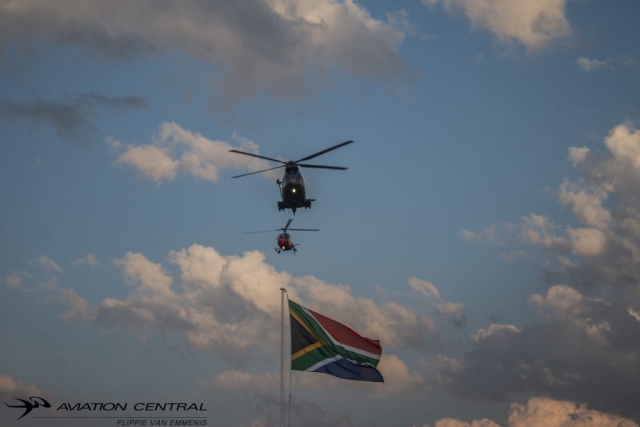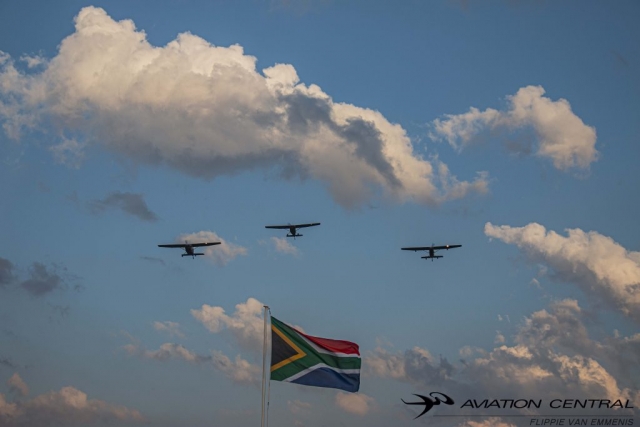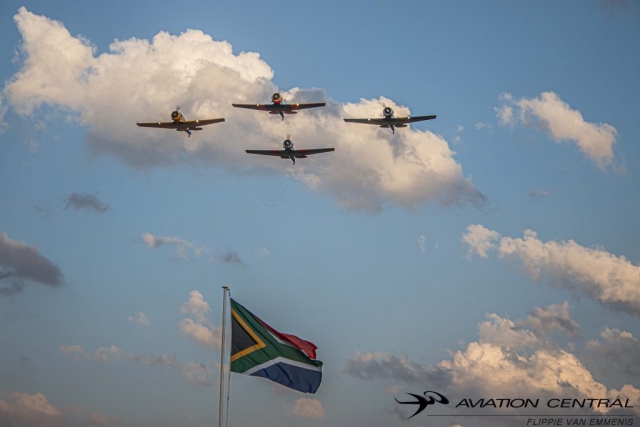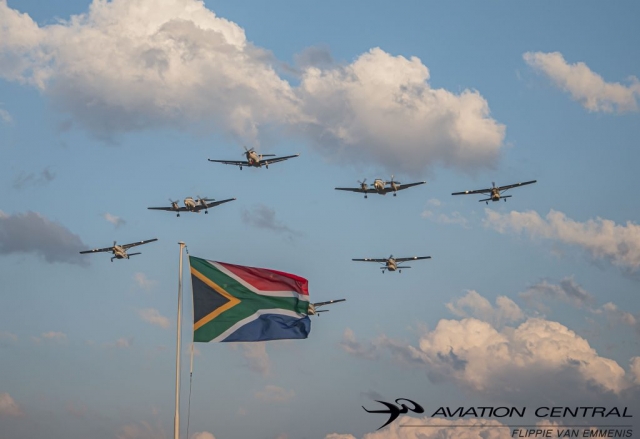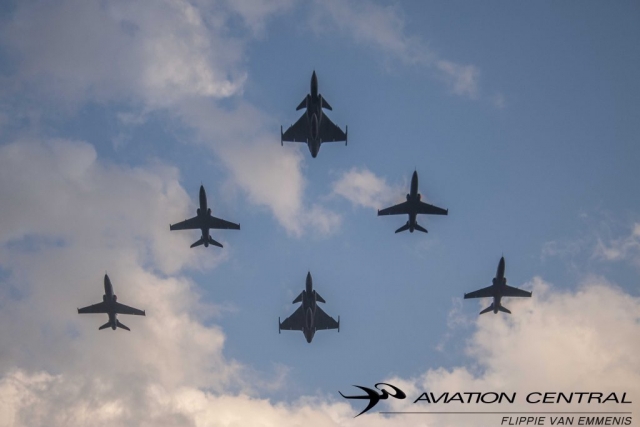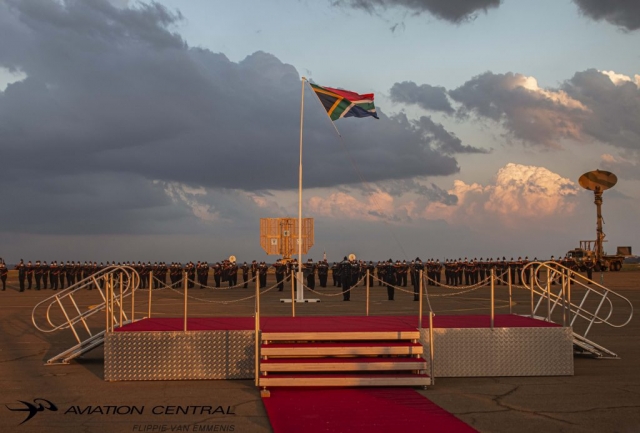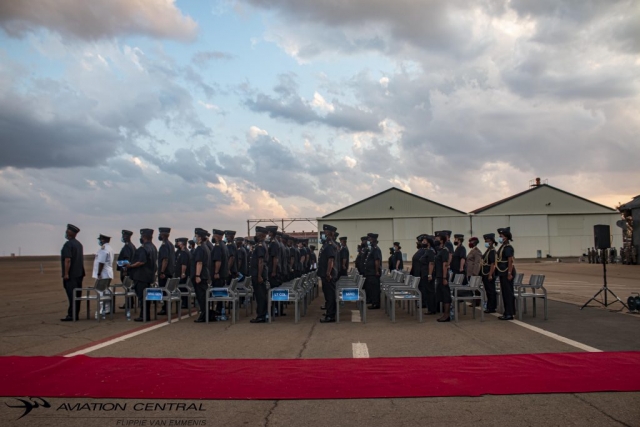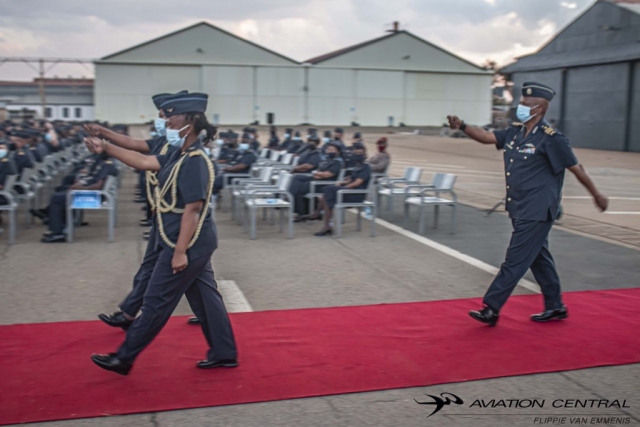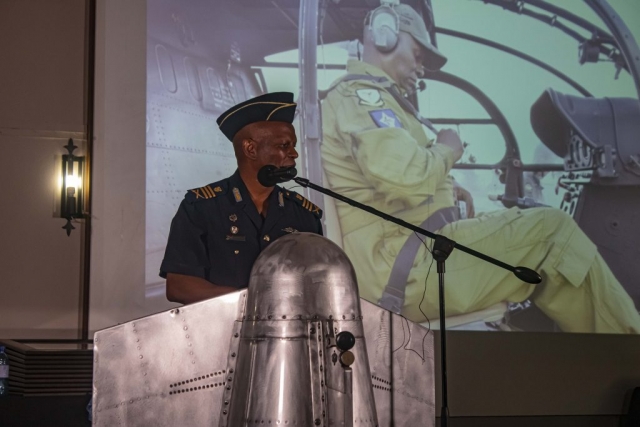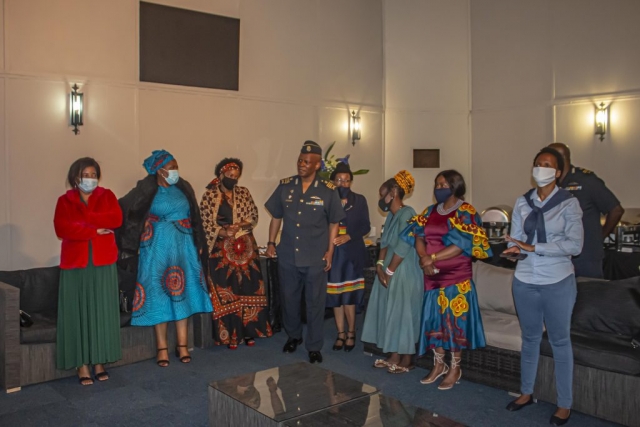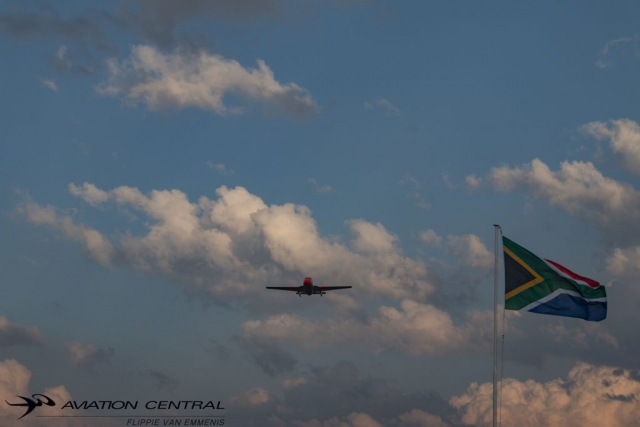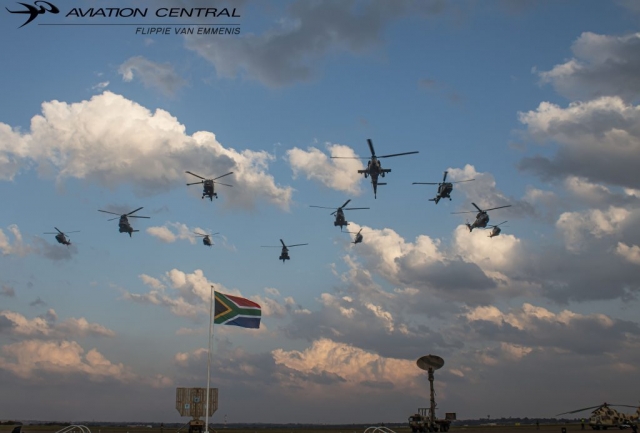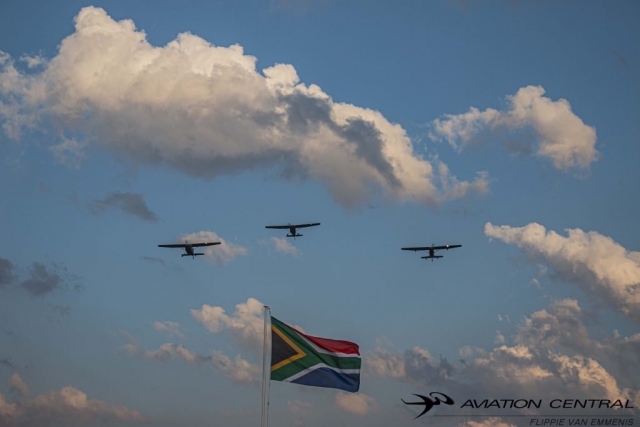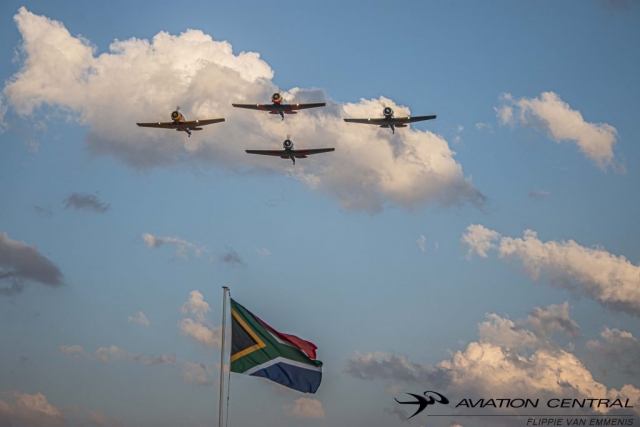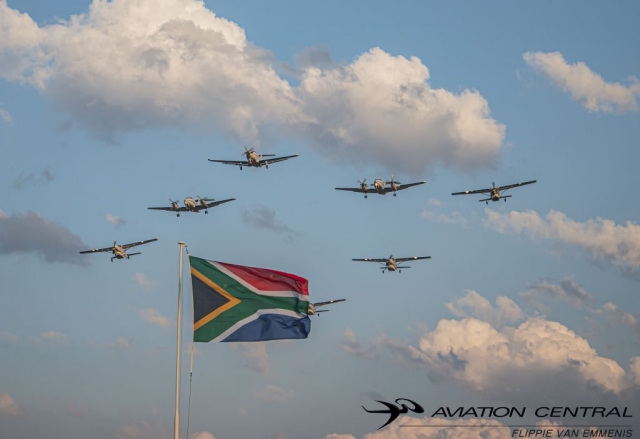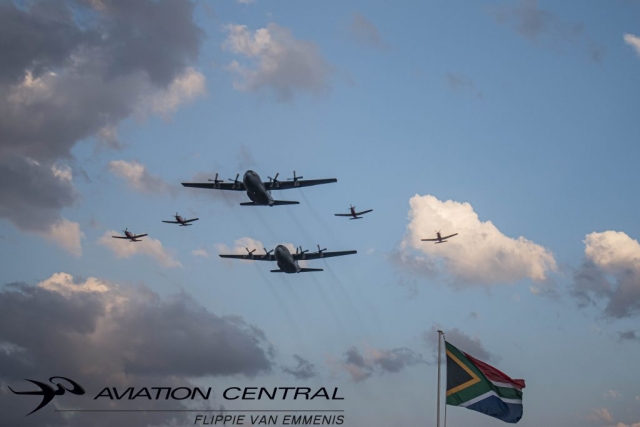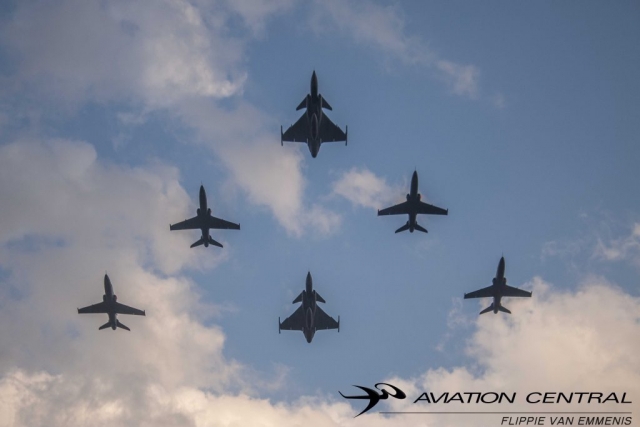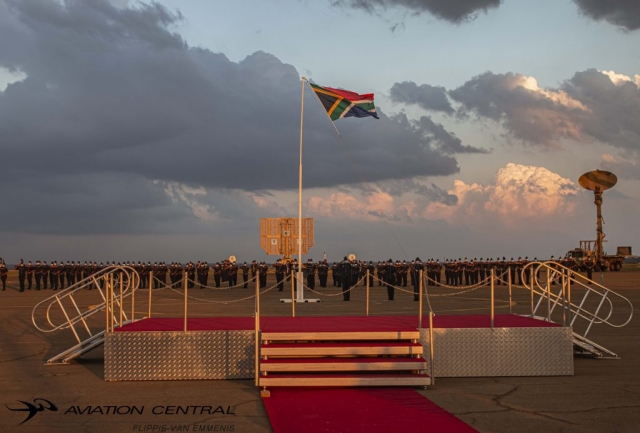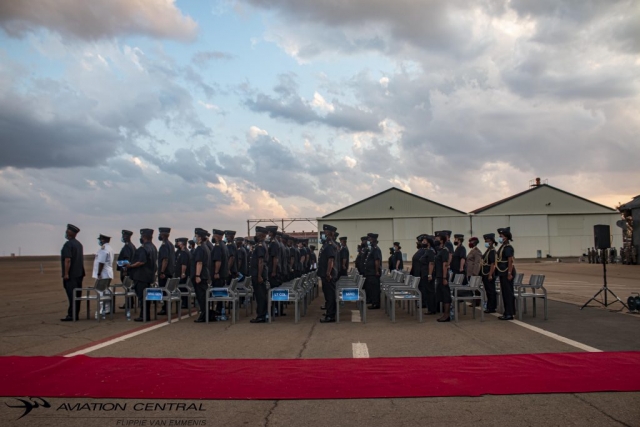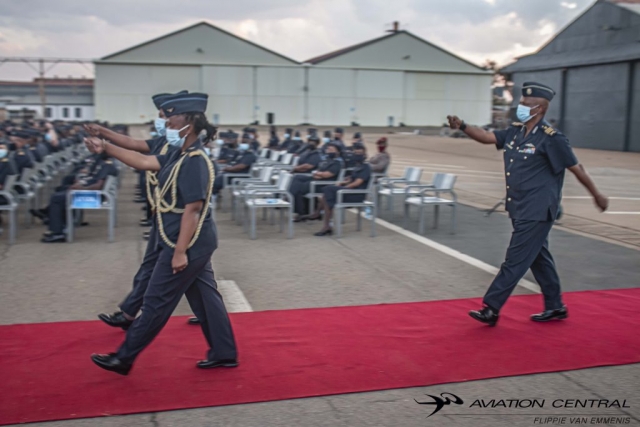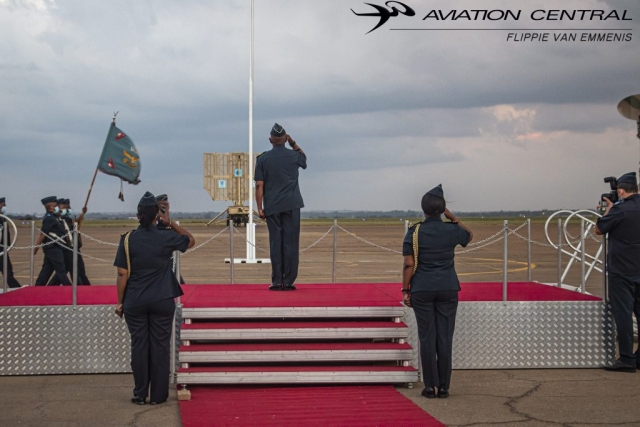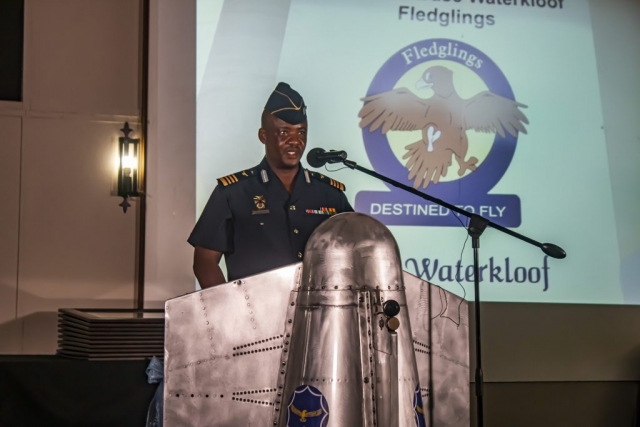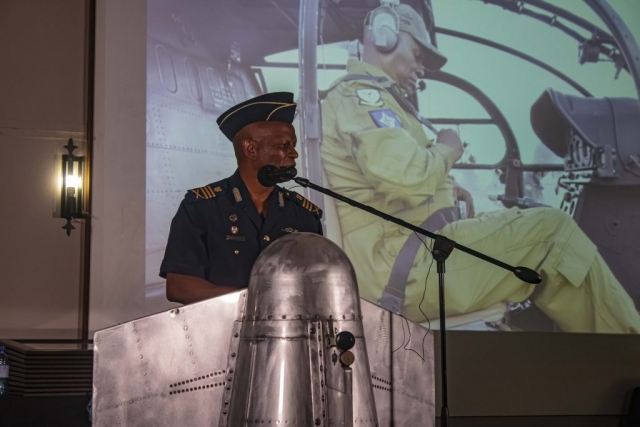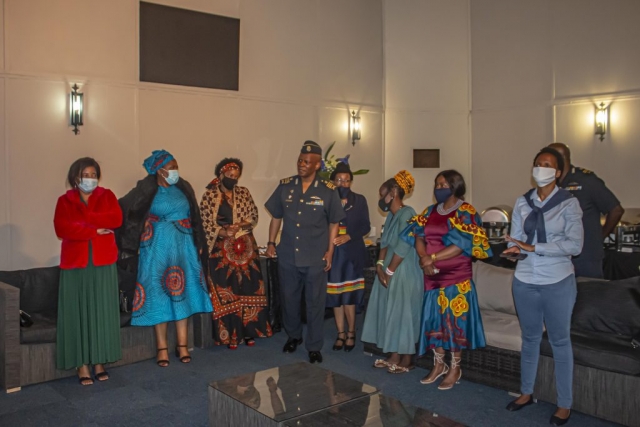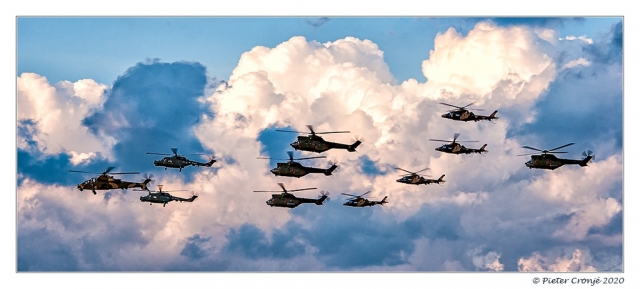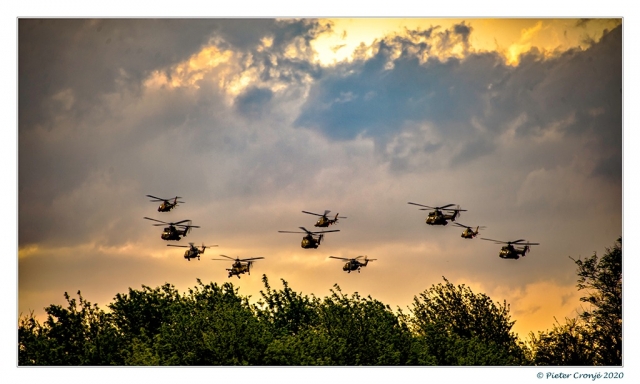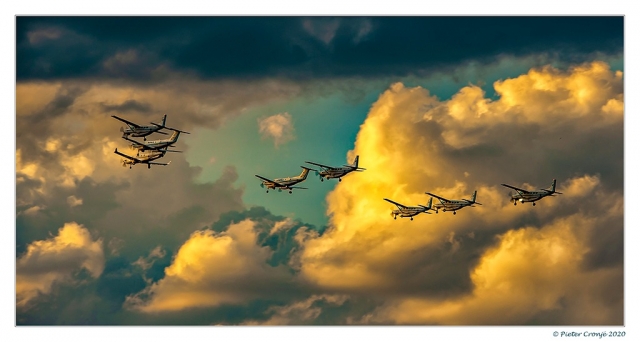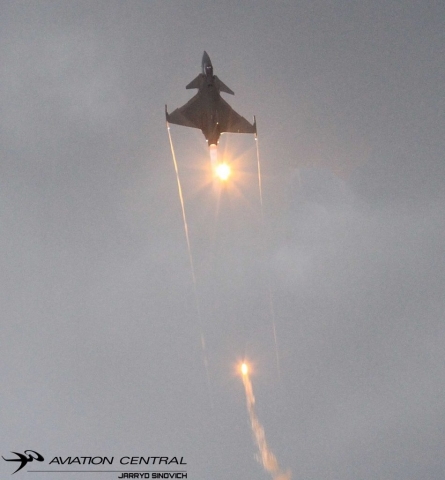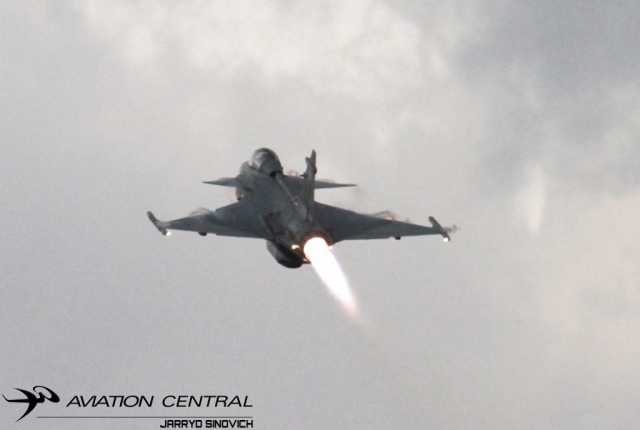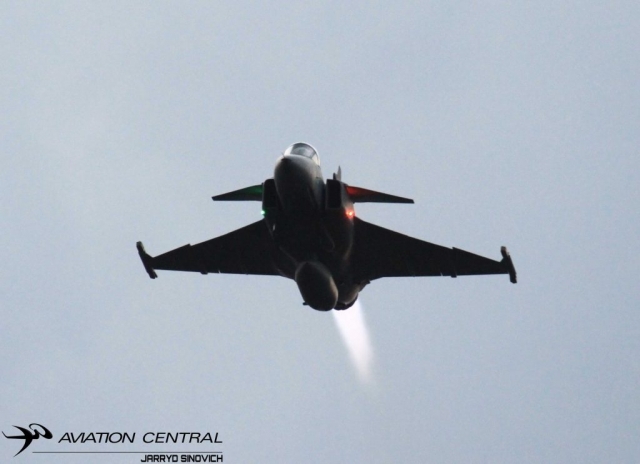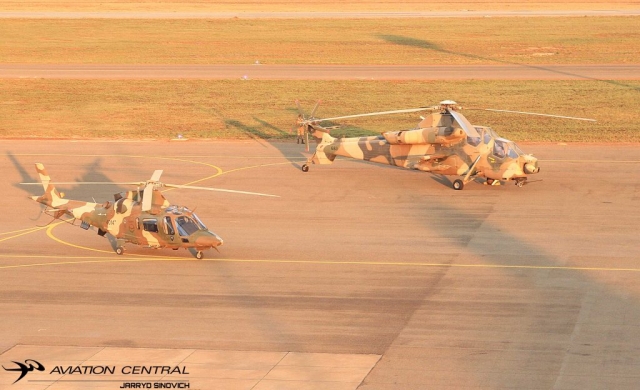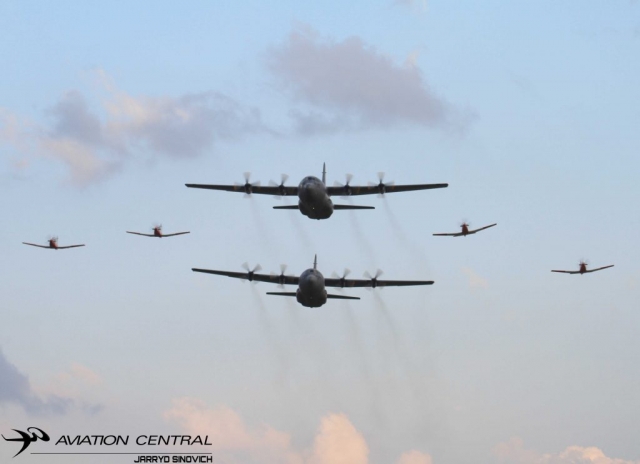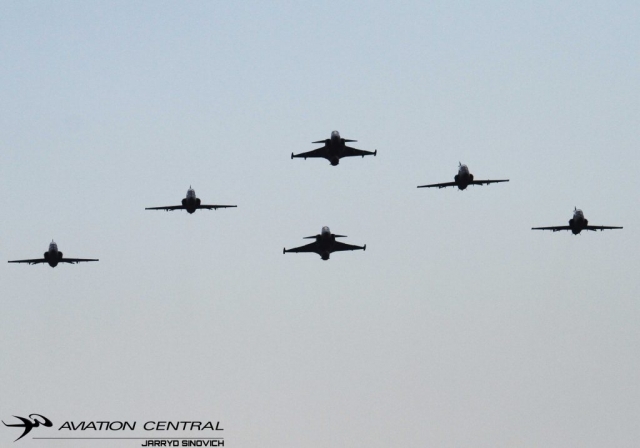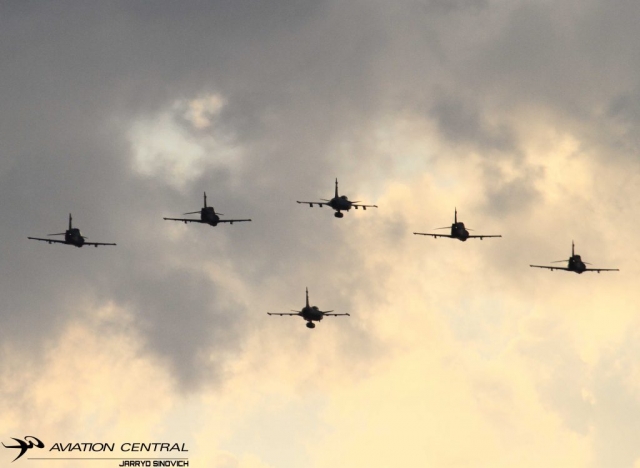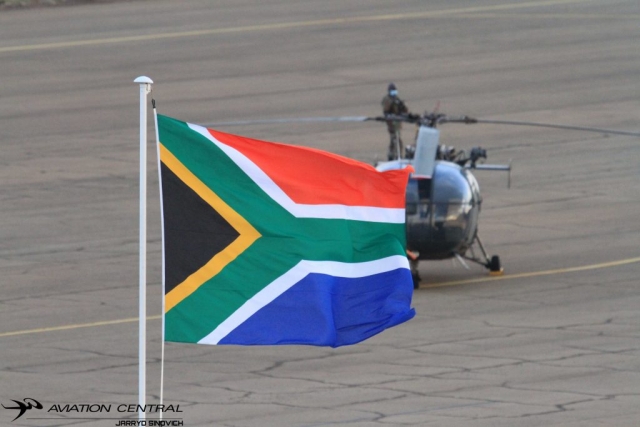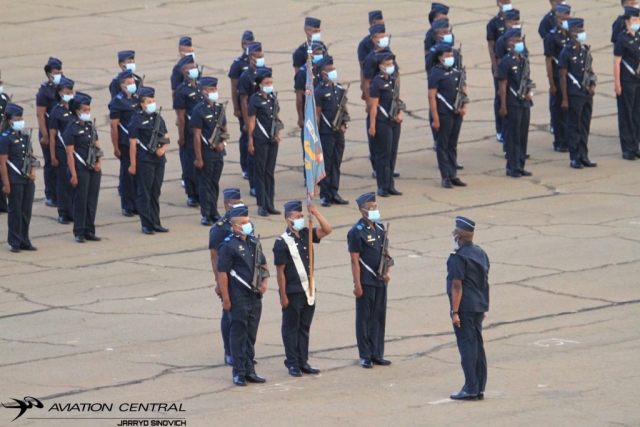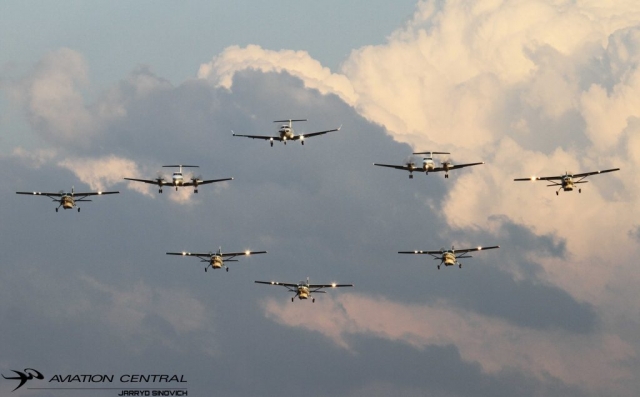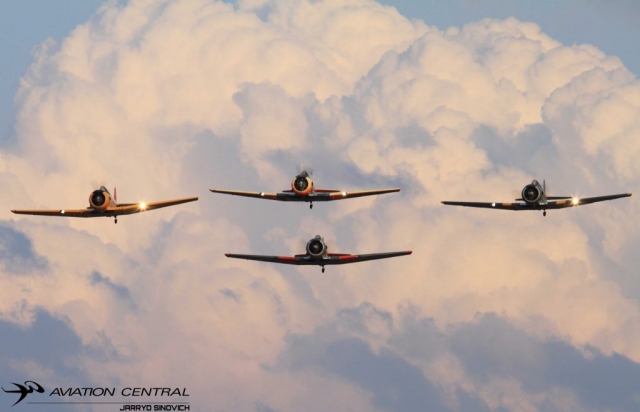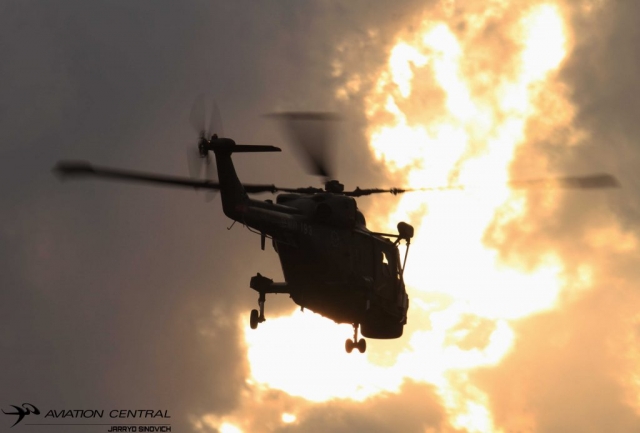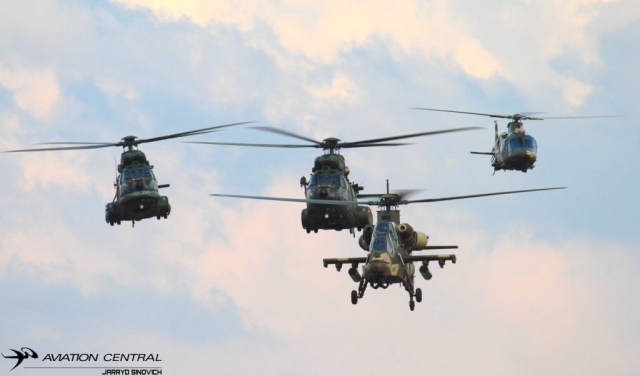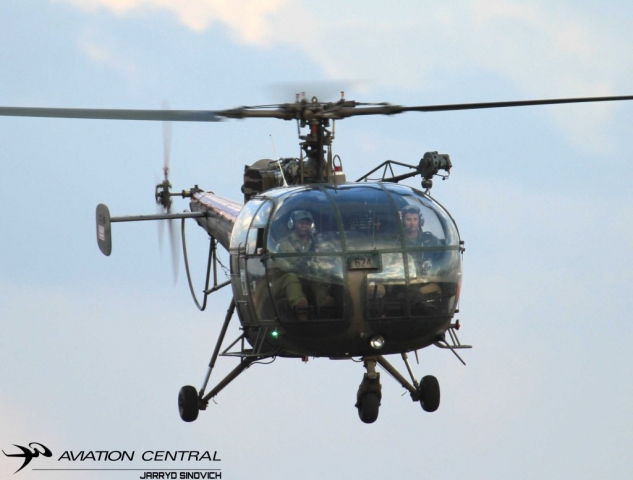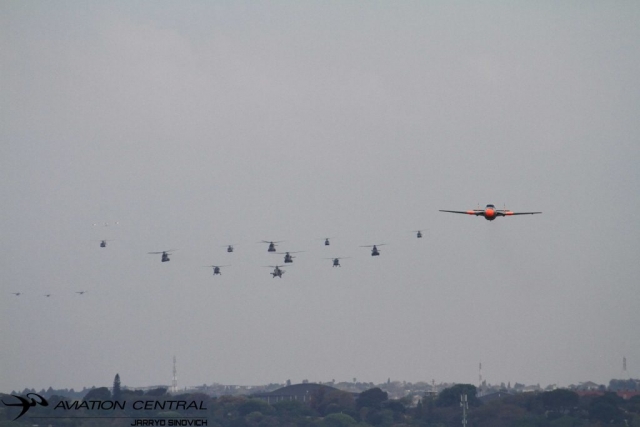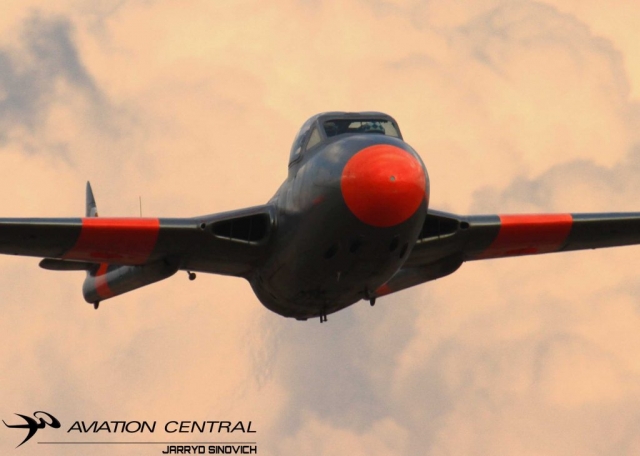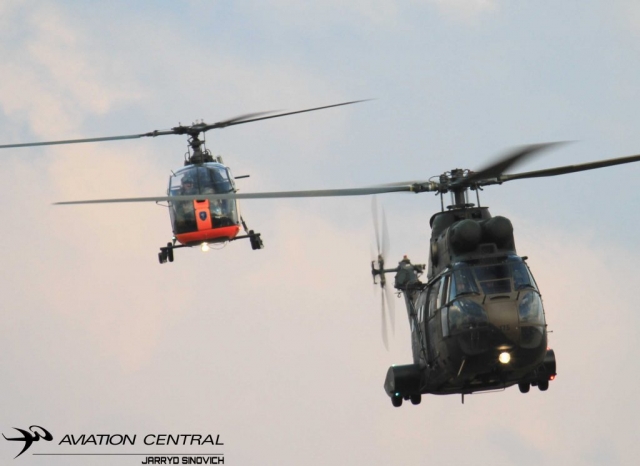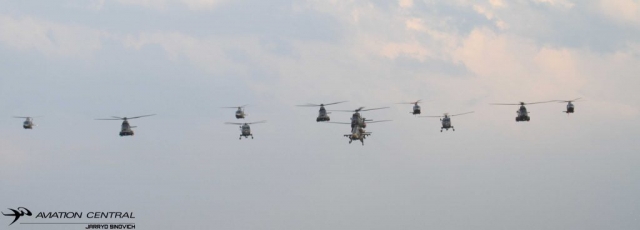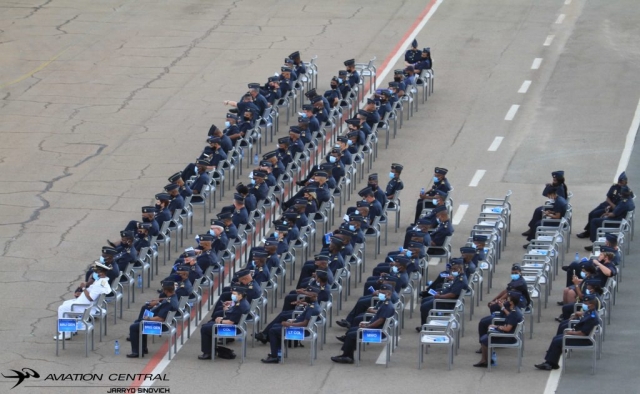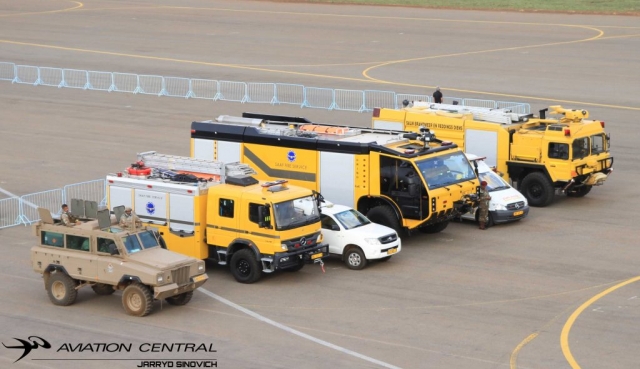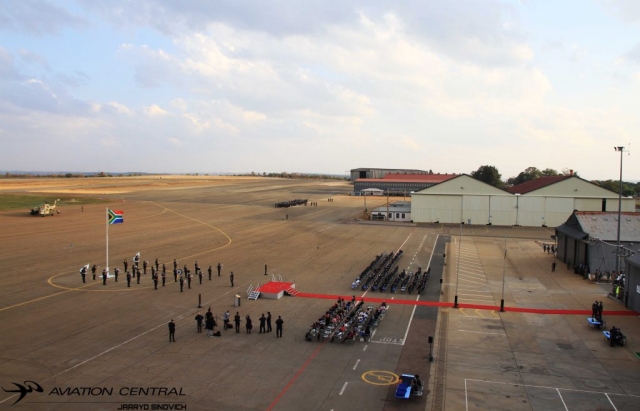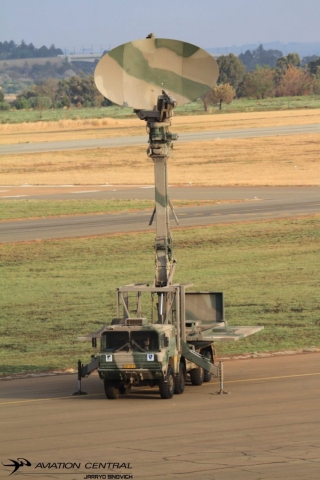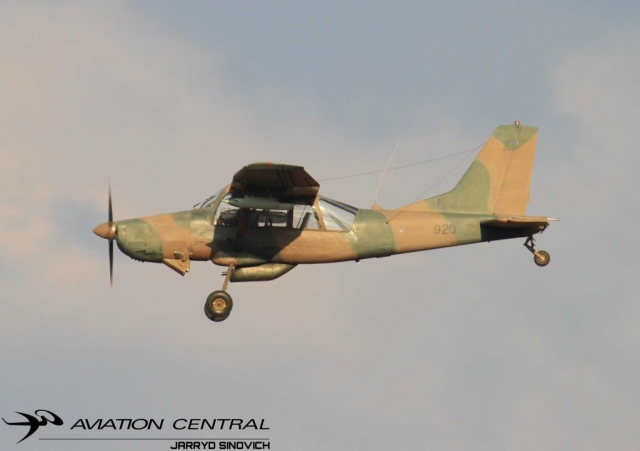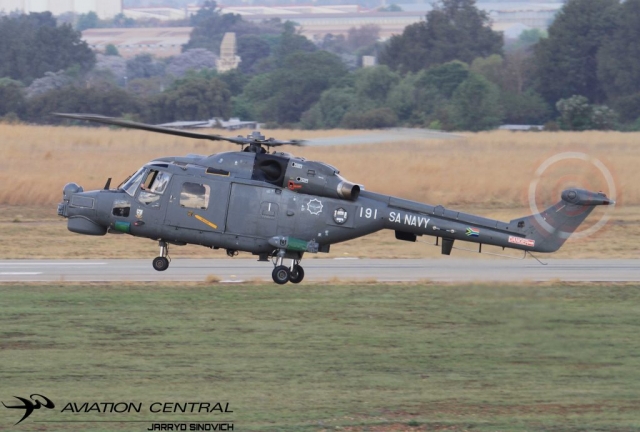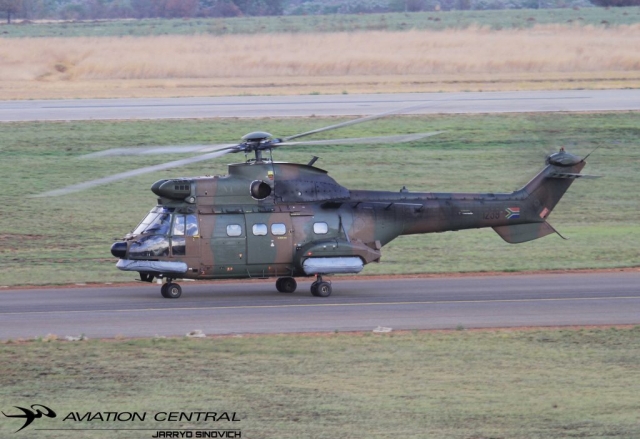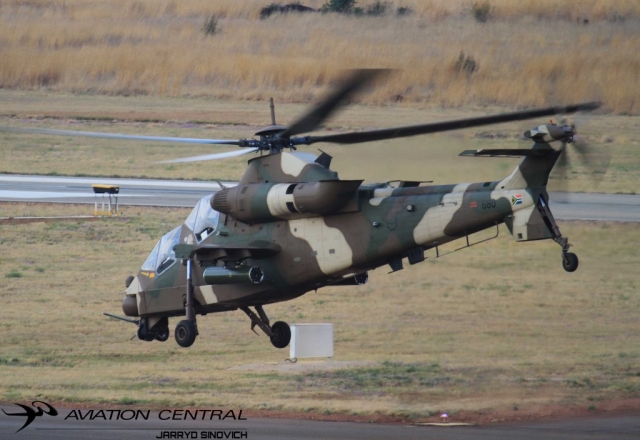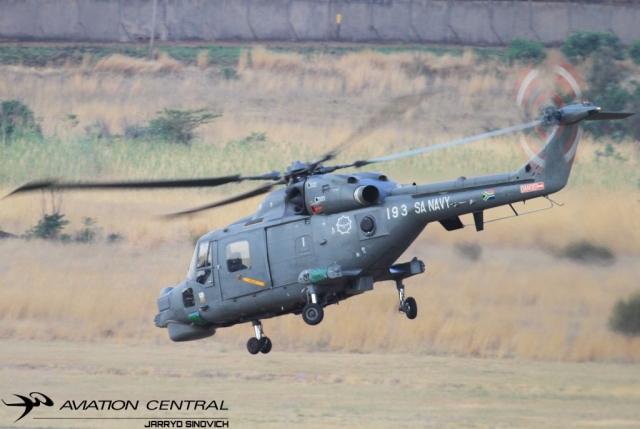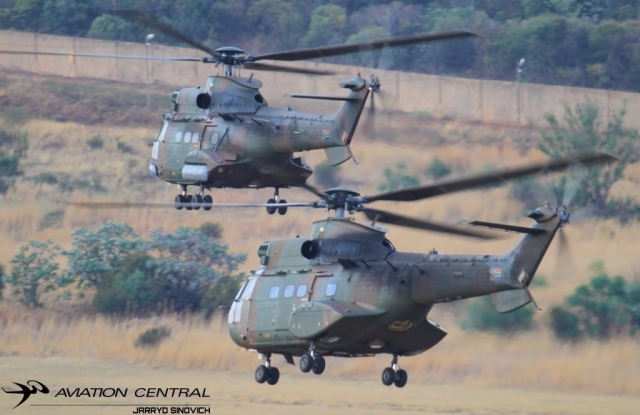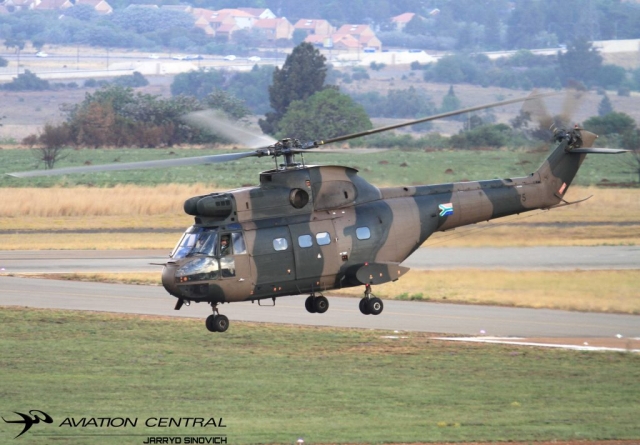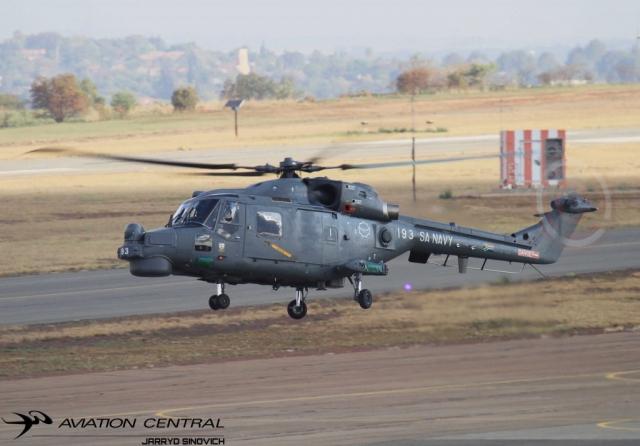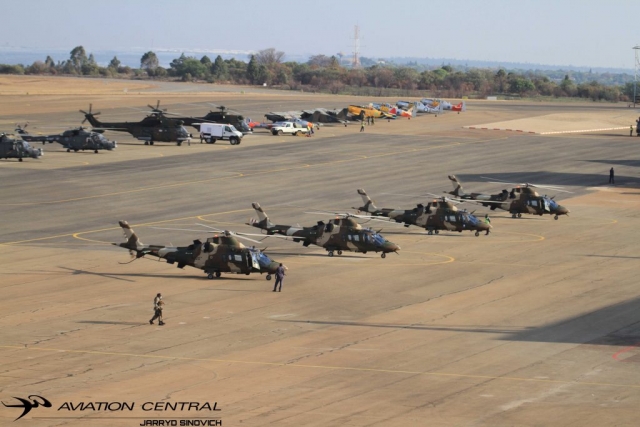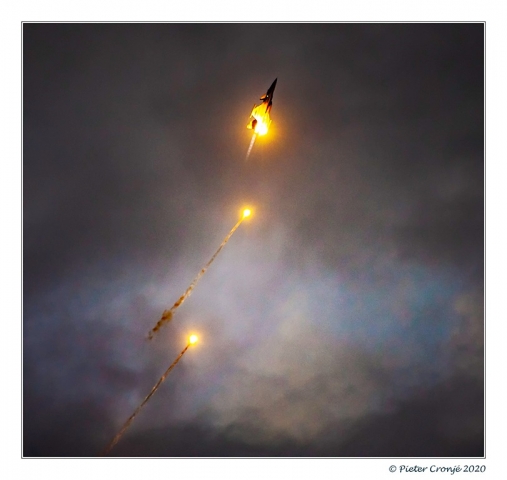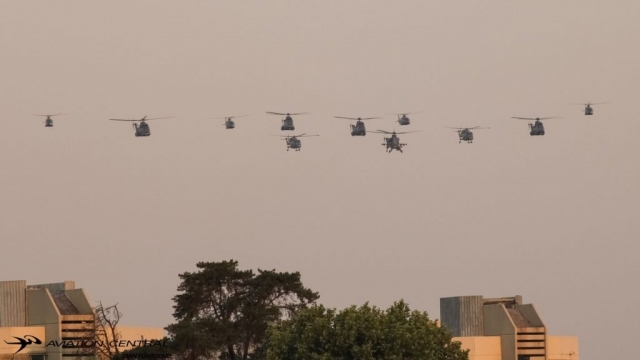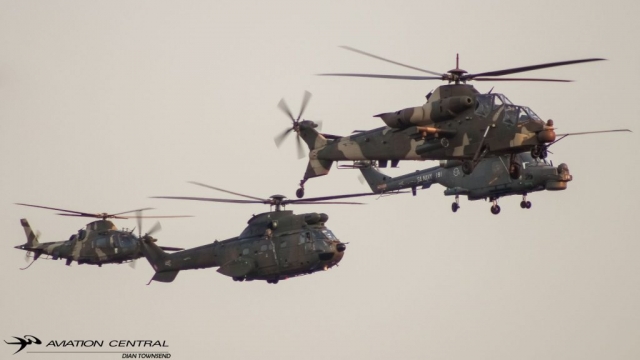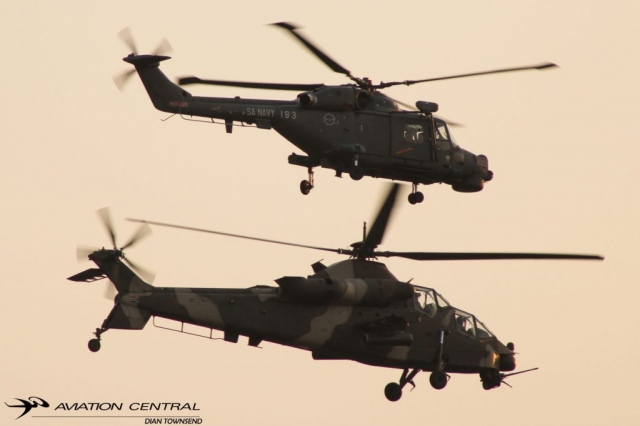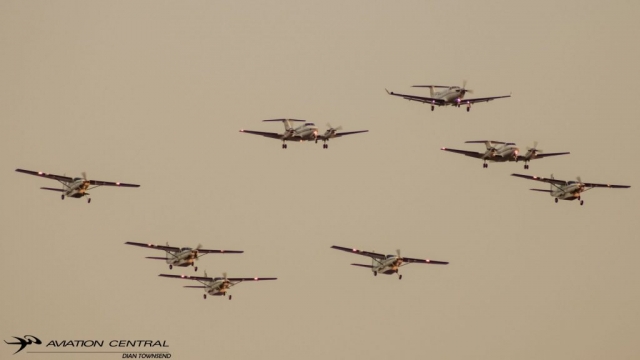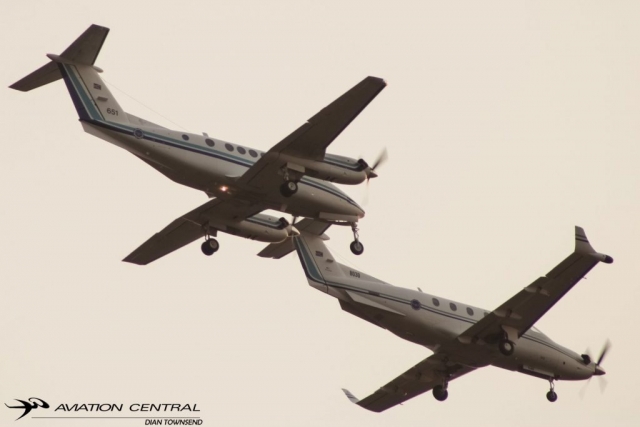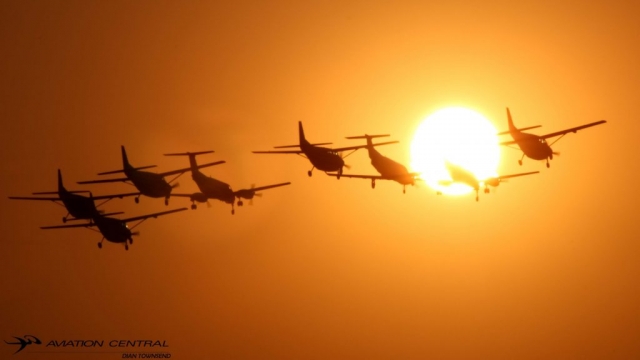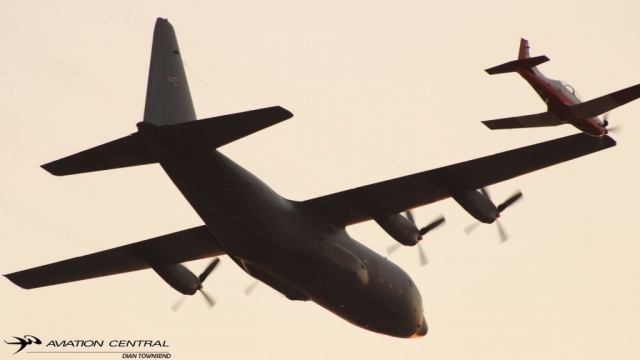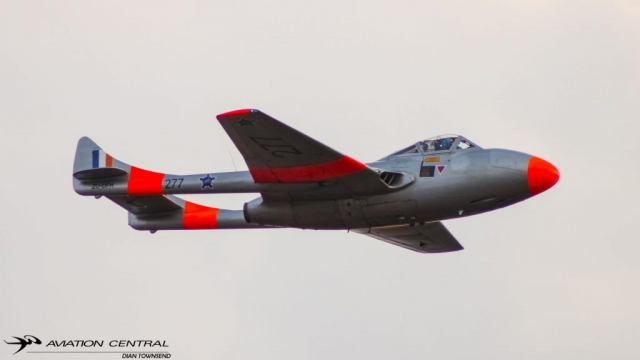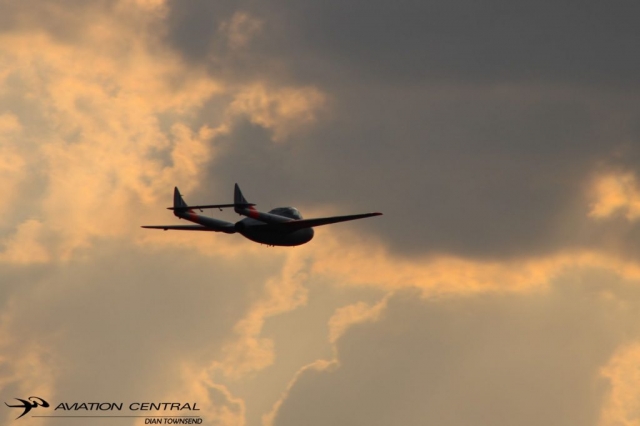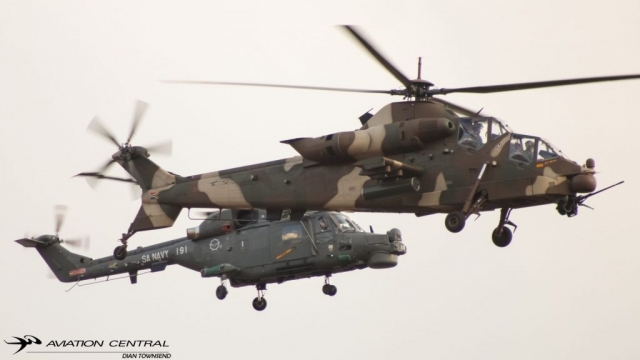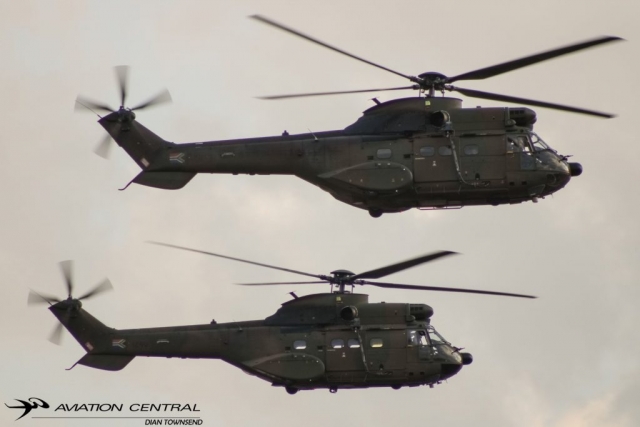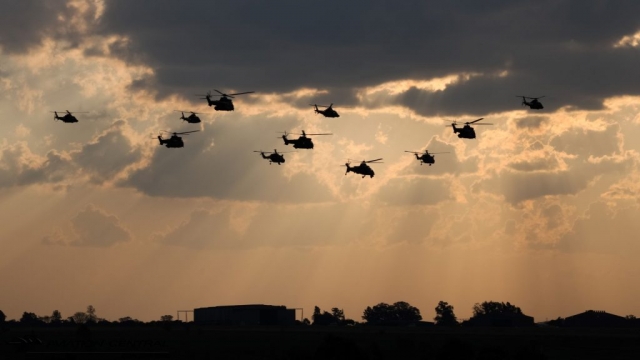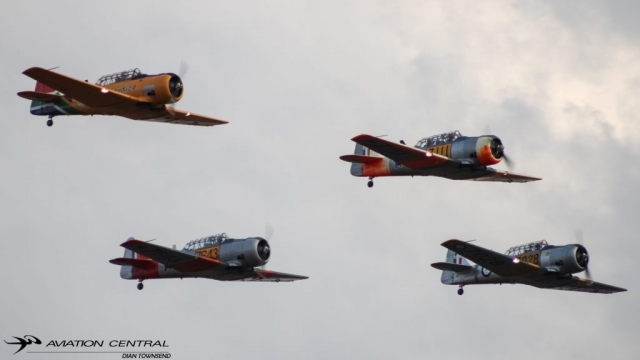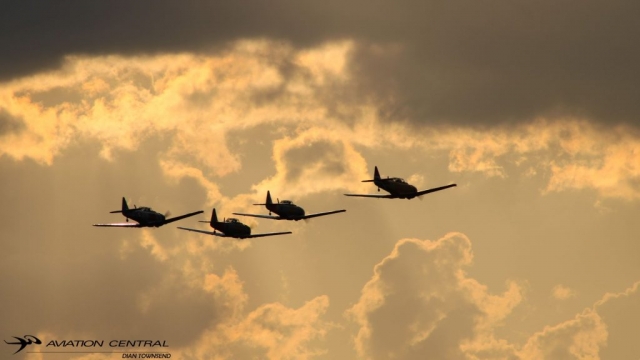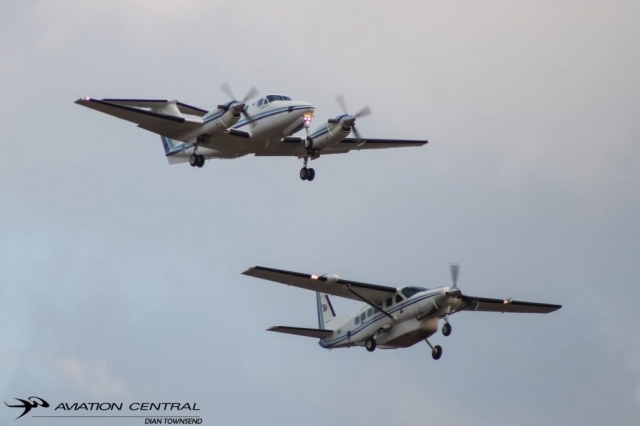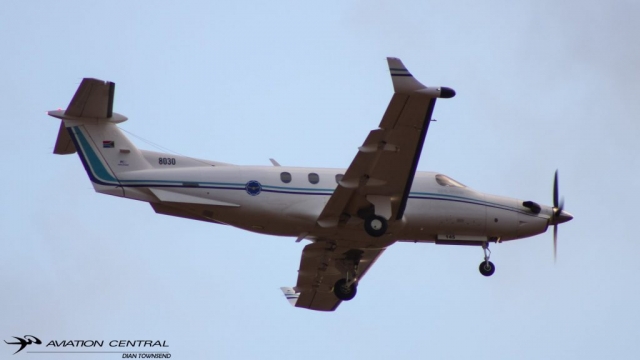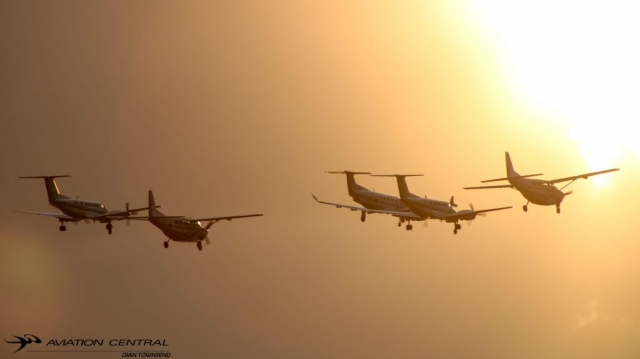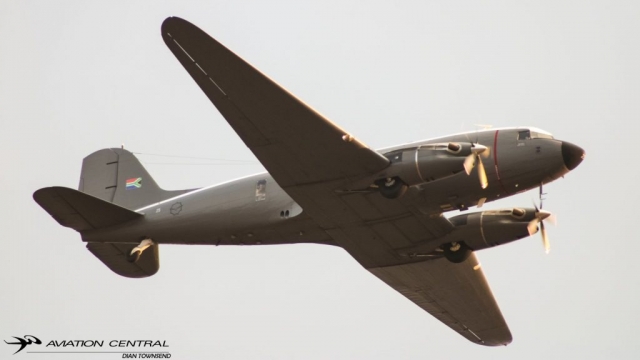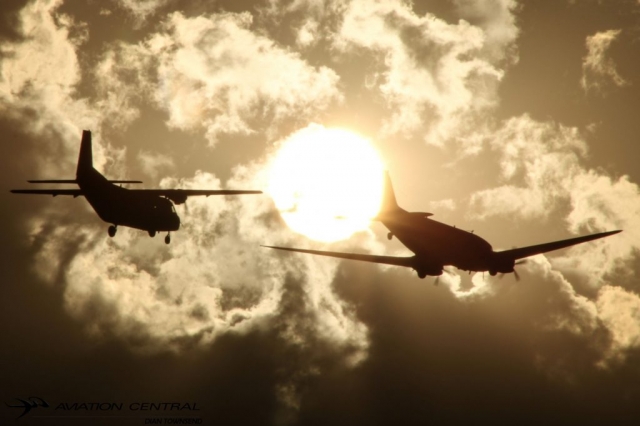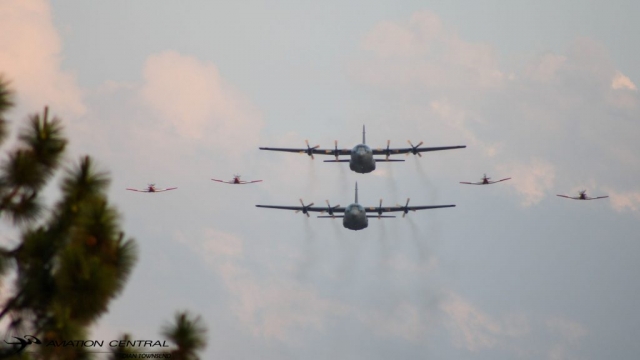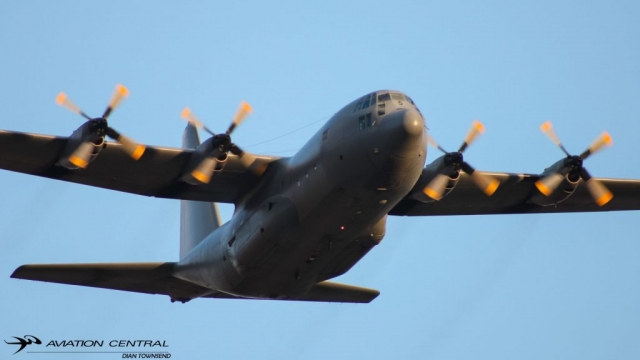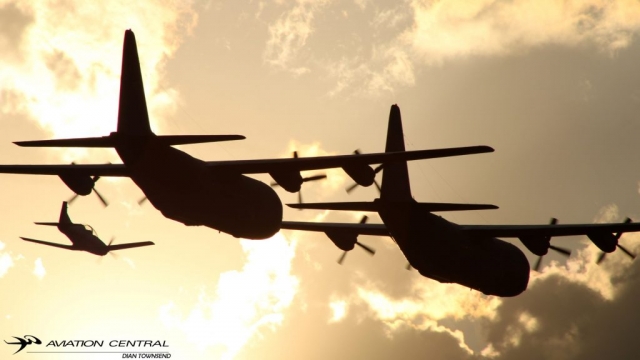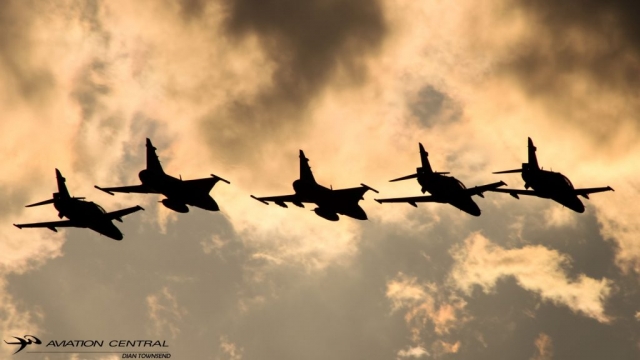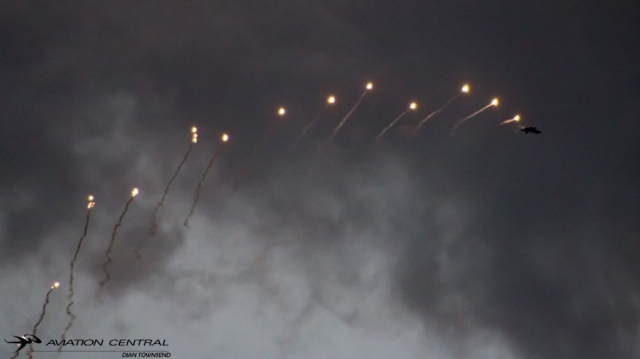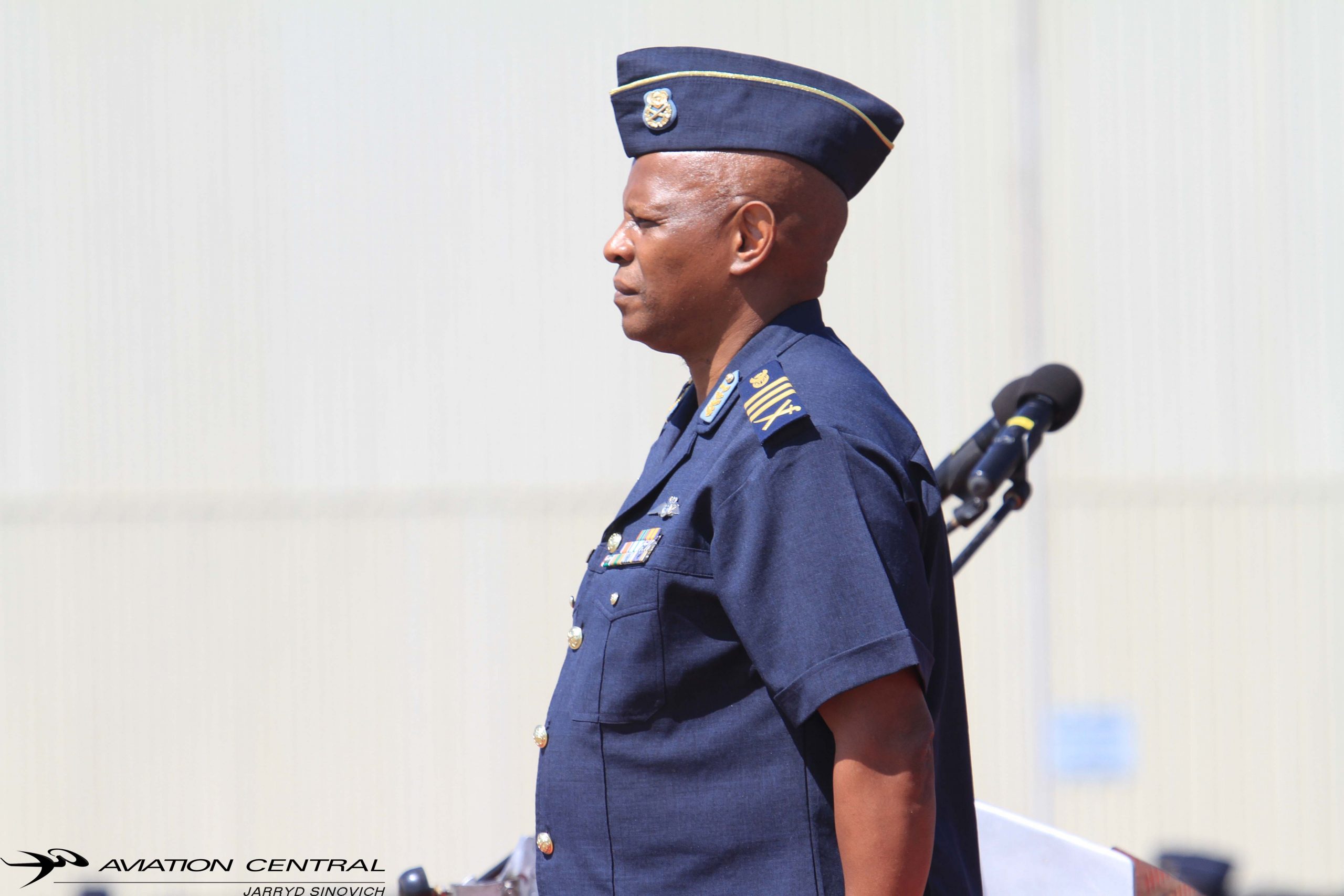Tag Archives: Fabian Msimang
Retirement Of SAAF Lieutenant General Fabian Msimang
On Wednesday 30 September,members of the South African Air force and members of the media got to witness a series of beautiful flypasts from a number of aircraft of squadrons based across South Africa.A fitting tribute and thank you to the former Chief of the South African Air force!



Lieutenant General Fabian Zimpande (Zakes) Msimang integrated into the South African National Defence Force in 1994 after the first Democratic Elections as a qualified helicopter pilot.He received his flying training at Frunze 1 Central Officers Training Center – Kirghistan, in the Union of Soviet Socialist Republics between 1986 to 1991.


He graduated from the institution with a diploma in Command and Tactics of Military Aviation.During Msimang’s Career he has flown the Mi8, Mi25 ,Alouette III and Oryx Helicopters.He also completed a factory conversion onto the Agusta A109E Helicopter at Agusta/Westland now known at Leonardo in Italy.




He was a member of the Umkhonto We Sizwe (MK),the military wing of the African National Congress.He engaged in combat in Angola in 1986.In 1994,he completed the Air force Junior Staff Course in Zimbabwe before returning to the South African National Defence Force.Post 1994,he served as an operational pilot in both maritime and inland operations.

In 2000,Msimang was appointed the assistant project officer on the acquisition programme of the Agusta A109LUH in Italy.He went onto successfully complete the Senior Staff Course at the Italian Air force War School.On his return in 2003 from Italy,he was appointed the Officer Commanding of 87 Helicopter Flying School at Air force Base Bloemspruit. The Following year he successfully completed the Joint Senior Command and Staff Programme at the South African National War College.


In 2005,he was appointed officer commander of Air force Base Bloemspruit and promoted to the rank of Colonel.In 2006,he completed the Executive National Security Programme at the South African National Defence College.In 2007,Msimang,after a two and half year tour as OC at Air force Base Bloemspruit,he was appointed Director Helicopter Systems and Promoted to the rank of Brigadier General at Air Command.





In November 2010,he was appointed Chief Director Air Policy and Plans and then promoted to the rank of Major General,responsible for Air force Strategy,policies,capabilities and resource allocation.On 28 September 2012 he was accepted command as the Chief of the South African Air force from Lieutenant-General Carlo Gagiano.





Prestige Day Parade Address By Lieutenant General Fabian Msimang
| Gracious AIR FORCE 2020 Greetings to you Fellow South Africans and our international guests. About 59 years ago, an infant was wrapped in documents and blankets as the Apartheid security forces stormed his mother’s home looking for sensitive information on the African National Congress. They were unable to find the well-hidden documents and the baby was spared being orphaned. The infant and family were smuggled out of the country to follow his exiled father. He grew up dislocated from his homeland, growing up thinking that his country was a myth that only existed in the lived experiences of his elders. The boy was schooled in foreign countries with their welcoming arms, and different languages. Fast forward……. The boy grew into a young man who was trained with many other young men and women in the fight for an equal democratic society, grounded in revolutionary love for their people. The man would eventually return to his home land with the ghosts of many comrades sown into his skin. He had to put aside past differences in the new nation and work towards a common future goal as enshrined in the newly birthed Constitution whose Preamble states: “We, the people of South Africa, Recognise the injustices of our past; Honour those who suffered for justice and freedom in our land; Respect those who have worked to build and develop our country; and Believe that South Africa belongs to all who live in it, UNITED in our diversity.” Today, at the tail end of the 25 year celebrations of our Young Democracy and also the 25 year Celebration of the formation of the new South African National Defence Force and its various Arms of Services, that young man, now bald and before you, has the honour of addressing all those who could attend. But I would be remiss if I didn’t first pay tribute to all our brave women and men in uniform who are in other lands and on the home front, serving our People and safeguarding our national interests. And taking a moment of silence for those fallen heroes of democracy who no longer stand with us – we remember you. We are the writers of our future, shaped by our consciousness, our history and our experiences as individuals and as part of various communities. As we today grapple with our complex PRESENT which is informed by our difficult and painful PAST, we are duty bound to create conditions to build a strong foundation for a better and promising FUTURE we the people of South Africa all yearn for. I stand here before you as the 21st Air Chief in the pre and post 1994 history of the South Air African Force; and the 5th Air Chief of the South African Air Force in the new dispensation – this is your Air Force, the Peoples Air Force. It is therefore my singular honour and privilege today to welcome you all to this year’s celebration of the South African Prestige Parade under the theme “Embracing Our Collective Heritage” celebrate nation-building, social cohesion, freedom, peace and unity with you. My prayer today is, as we acknowledge the history of our Air Force and as we celebrate 25 years of a democratic SAAF, may we rise to the occasion to help the nation dissolve the barriers of race, religion and political divide. May we embrace our differences with understanding and compassion. Our museums on all the bases have captured the time line of the history of the SAAF to date, with a deep sense of neutrality and in totality, indeed there is always room for improvement. In the spirit of collective heritage and social cohesion, I invite you all to participate in the country’s nation-building efforts where we observe days of honor and remembrance with appropriate ceremonies and in context. As we make the history of the SAAF pre 1994, we must be mindful of the glaring human rights violations that occurred. Formation of the Union of South Africa’s Air Force In 1917 sent by Prime Minister General Louis Botha to London to attend the Imperial Conference, General Jan Smuts presented a report to the British Parliament which became known as the “Smuts Report” stated, inter alia; “Air Service on the contrary, can be used as an independent means of war operations far from and independently of, both Army and Navy.” General Jan Smuts soon summoned Sir Pierre van Ryneveld to London and was told: “I want you to go back out to South Africa and start an air force”. Subsequently, South Africa received an Imperial Gift that comprised of 113 aircraft and included steel frames for 20 hangars and everything else required to start and operate an air force. The consignment was sent here to where we currently stand, an airfield that was named Swartkop, the oldest active military airfield in the world today. Some of the Imperial Gift Hangars are still in daily use as you can see. REPUBLIC OF SOUTH AFRICA 1994 TO 2020 AND INTO THE FUTURE A CORE RESPONSIBILITY OF THE STATE Is to both secure the State and to protect its citizens. We thus accord the Armed Forces, the Intelligence Services and other Security Services the duty to protect the sovereignty and territorial integrity of the State and to ensure that the Authority of the State is duly maintained and exercised. Section 227(1)(a) of the Interim Constitution (1993) thus pronounces that one of the functions of the Defence Force is: “For service in the defence of the Republic, for the protection of its sovereignty and territorial integrity”. However, as we enter the epoch of the 3rd and 4th Industrial Revolutions, we begin to sense that such developments, and the changing nature of the world affairs, will pose immense challenges for the State and its citizenry. It is my view that our traditional view of sovereignty and security is challenged due to the digital explosion of the 3rd and 4th Industrial Revolutions; this through increasing globalisation, integrated and inter-reliant economies and our inter-dependence on each other within the global world. Globally, most Air Forces have always been at the cusp of technological development, and the 4th Industrial Revolution will place even more prominence on the role that our Air Force must play in the development and maintenance of South Africa’s industrial and technology base as well as the inter-connectedness of systems. The evolving role of the Armed Forces must be informed by our understanding of sovereignty, the value-exchange between the State and the citizenry and the changing nature of conflict. CONSIDERING THE FUTURE With the birthing of democracy, the South African Air Force began a new era in 1994. Transformation over the past two and a half decades has brought about a change in composition, structure, and hardware with a new vision since 2013 of “An Air Force that Inspires Confidence”. The security landscape within which we find ourselves since the new dispensation, is rapidly developing in a manner challenging to our traditional views of sovereignty and security. The legacy capabilities, platforms, doctrine and tactics of the Defence Force which we inherited in 1994, was a Defence Force fundamentally and rigidly orientated towards and postured on conventional warfare, with frameworks rooted in Cold War thinking and the legacy thinking of the Second World War. We must now ask ourselves if these remain appropriate for the conflicts that we may face in the future, bearing in mind that the emerging security dimensions will continue to challenge the readiness and preparedness of our security structures? We must increasingly focus our energies on the future trajectory and nature of such conflict, including both the means and methods of both the “old” and “new” wars. We are thus forced to question if our dogged obsession and unwavering focus on conventional military capabilities, platforms, doctrine and tactics indeed have future relevance? A BALANCE OF HARD & SOFT POWER National Security must have at its crux the traditional responsibility for the protection and continuance of the sovereignty of the State, its political and economic independence and the protection of its institutions, values and freedoms. However, the architecture on which any future National Security Policy is built must be broad enough to encompass the consolidation of democratic liberalism; the pursuit of political and social justice; economic development; environmental sustainability; and the combatting of crime, violence and instability. We must therefore examine carefully the Mandate of the Armed Forces to ensure that the Armed Forces are, and remain, pertinent and relevant to all these dimensions. DELIVERING HUMAN SECURITY TO A DEVELOPMENTAL STATE We must reflect on the fundamental contribution that Defence makes to the Sovereignty of the Republic of South Africa and the maintenance of the Authority of the State. As elucidated in the South African Defence Review 2015, we find ourselves within a broadened and expanded security paradigm which has a particular emphasis on the well-being of the citizenry. The legitimacy of the State in the eyes of the citizenry will thus be the sustaining factor that ensures the survival and continuance of the State. The State will furthermore have the obligation to facilitate, if not create, the environment and the necessary conditions for the fulfilment of human security and economic prosperity. Policy should express both how the execution of mandated defence functions and other specific initiatives can, in certain circumstances, contribute to the perceived legitimacy of the State and the human development and security of the citizenry. Given the above deliberations, I posit that paramount to the relevance and readiness of the military to contribute to both the Defence of the State and the Protection of its People must be at the forefront of future military planning. THE FUTURE THAT OUR YOUTH DESIRES This younger generation indeed ascribe legitimacy to the State based on its ability to deliver Human Security to its citizens. This human security paradigm, whilst not discounting our traditional views on sovereignty, is driven by the perceived value that the State delivers to its citizens through a broad Social Compact with them. Some of the dimensions of this social compact and the desires of the youth include: • Political and legal legitimacy. • Basic and inalienable rights and freedoms. • Food and water security. • Relevant & accessible education systems. • Modern & Accessible health systems. • Appropriate basic services. • Environmental stability. • Infrastructure and economic development. • Social cohesion, amongst many others. · inalienable cultural rights. · Freedom from gender-based violations DECLINING PEER-ON-PEER CONFLICT The three decades since the demise of the Cold War has seen a military focus on operations of a much broader nature. Internationally we have become preoccupied with counter-terror operations, counter-insurgency operations and stabilisation operations. Domestically, this has led to evolving capabilities focused on Military Operations Other Than War (MOOTW). We are therefore compelled to first ask ourselves the same question: Has our recent military operational commitments detracted from our core military functions, and if so, what are the consequences thereof for the future of the South African Air Force? This also begs a second question, namely: What is the probability and possibility of Peer-on-Peer Conflict for the South African Air Force. If so, what integrated capabilities do we require? If not, where should our primary focus lie? We consequently have to enhance our understanding of the evolving nature of conflict on the African Continent. Currently, we observe an almost complete lack of State-on-State Conflict on the African continent, with little or no linear State-on-State contestation. Conversely, we observe growing Intra-State Conflict, often without the presence of a State-Actor (Statutory Force). More often than not we observe the involvement of both irregular and proxy forces as parties to the conflict. African conflicts of the future are therefore increasingly less likely to involve Peer-on-Peer conventional military conflict. This will in all likelihood be overtaken by an increased focus on both irregular warfare and hybrid warfare, as was recently observed in Libya. Future conflicts will be trans-national in nature, often involving the use of proxy forces, frequently involving the use of IED’s and often leading to a significant loss of innocent civilian life. FUNDAMENTALISM AND TERROR The threat of terrorism, ethnic nationalism and fundamentalism (TENF) is increasing exponentially. In many instances, TENF and state-backed jingoism appear to be a push-back against the realities of a globalised world and its impacts on both people and societies, and often with both international and domestic nationalist manifestations. The threat of terrorism is often troublesome to measure and define; it is consequently difficult to assess the security implications thereof. Notwithstanding that defining terrorism is very problematic, largely due to the distinct ideological bases thereof, the one seminal characteristic is the formidable and gruesome nature of their tactics. As our Armed Forces modernise and become more technologically advanced, careful attention must be given to having a balanced and broad enough suite of capabilities that can address the challenge of TENF. Developing a common understanding of the extent of the threat is the first step in coordinating a national and integrated regional counter-terrorism response. DIGITAL AND CYBERSECURITY Our daily interface with the “borderless” digital world gives rise to a range of threats and concerns which were not previously part of our security paradigm. Persistent digital security and cyber threats now continue to dominate the international security agenda, as they increasingly more sophisticated and intrusive. Such rapidly evolving assaults in the digital domain threaten the very sovereignty of the State and seek to manipulate and destabilise critical information infrastructure, social and mainstream media and the economic and financial machinery that underpin the State. We are all acutely aware of the significant amounts of personal information freely available on social networking sites. Defence is not immune thereto. We are all extremely concerned about the vulnerability of military command and control infrastructure to cyber-attacks and the risk of electro-magnetic disruption to other ancillary military systems. The threats in this environment are rapidly evolving and changing, posing significant challenges for both the cyber-defence and cyber-offence capabilities of the Armed Forces. In as much as the requisite hardware and software required for these tasks is important, the most important, and often the least resourced is the human dimension thereto. MIGRATION, NATIONAL BORDERS AND THE MARITIME SPACE Our borders are the physical manifestation of our national sovereignty. Yet we experience unprecedented illegal cross-border migration, human trafficking, the smuggling of small arms and light weapons, trafficking in stolen goods and property and the illegal harvesting and transfer of natural resources. Similarly, we are also challenged by maritime crime in our Exclusive Economic Zones, piracy on the High-Seas, the illegal exploitation of maritime resources and the uncontrolled movement of people and goods at sea. The international response thereto has seen Multi-National Joint Task Forces being formed and deployed to high-risk areas. One of the difficulties such task forces face is reliable shared-maritime domain awareness. ENVIRONMENTAL SECURITY We actively need to address the effects of climate change and increase the sustainability of our environment. Some of the challenges facing developing countries include: • Regional Famine, as is now predicted by the UN World Food Programme in Southern Africa during 2020. • Increased access to safe and affordable drinking water. • Increased access to adequate and equitable sanitation and hygiene. • Increased access to affordable, reliable, modern and sustainable energy services. • Transforming high carbon-emitting sectors towards a low carbon economy, especially energy, transport, agriculture and waste management. • Implementing waste management programmes that increase waste recycling and decrease the incidents of landfill. • The intensive rehabilitation and restoration of ecological infrastructure across all dimensions (water, soil, air and biodiversity). • Developing strategic pathways for integrated spatial development and human settlements. The above challenges are as relevant to the Armed Forces as they are to the rest of society. We are proud of our members that we provided a critical role in the flooding disaster relief in Mozambique, KZN, Mamelodi and many other places. However, the burden on the Armed Forces stretches even further, as we know that our soldiers will increasingly be called upon to conduct search and rescue, disaster relief and humanitarian operations both domestically and in neighbouring countries in response to climate change and the attendant risks to environmental sustainability. This places more pressure on the SAAF requiring an increase in personnel and funding, to ensure we are ready to Inspire Confidence and fly to action where and when required. However, we cannot give proper consideration to the challenges facing us in the future, without making an assessment of the Means at our disposal to position ourselves for the future. Defence can only perform to the extent that it is resourced and funded. The Department of Defence has been forced to continuously adjust its plans downwards. This is myopic and short term thinking. This is dangerous. The Defence force is the Nations’ Insurance Policy. CONSIDERATIONS FOR THE FUTURE CONFLICTS: Perhaps it is now appropriate to commence with a robust discussion on what capabilities, platforms, doctrine and tactics would be most appropriate for future conflicts? It is crucial that South Africa develops a fit for purpose Defence Force that is agile enough to both physically and intellectually move seamlessly between its traditional mandated tasks and functions (however rare or occasional the requirement) and the demanding new environments of cybersecurity and cyber-resilience, proxy forces, hybrid warfare, transnational crime, climate change, as well as peace support operations to mention but a few. Crucial to the success of the Defence Force in these complex arenas will be the quality, education and professionalism of its human capital. Fundamental to achieving these goals and objectives will be the full employability of the force, its flexibility in terms of structure and equipment as well as its ability to function effectively within the demands of the 4th Industrial Revolution and the complexity of future conflict. Key to unlocking the above will be leadership at all levels, from the tactical to the strategic within the Defence Force to the policy decisions which will be vital to and ultimately shape the space for the above to occur. Professional Military Education and Leadership The professionalism of the Armed Forces, and specifically at the level of the individual soldier, is absolutely an essential ingredient in the relationship between the State and its citizenry. One cannot begin to emphasise how important education, training and development will be to the successful and sustained continuance of the Armed Forces of the future. Investment in the best, most appropriate, skilled and professional soldiers, is the most strategic endeavor that the Armed Forces can embark upon. The continued operation and future sustainability of the hardest working air assets of the SAAF being the Oryx, Rooivalk and C130, rely on an efficient and effective Original Equipment Manufacturer and Technical Design Authority of the Rotary Wing assets. The challenges faced by our local industry, has posed a threat to the sustainability of these assets, thus we call for alignment and cooperation amongst key stakeholders. To, the planning team for this year’s occasion led by Brigadier Gen Crouse and supported by Brig Gen Khoase and the Base OC Col Trish Schoeman, thank you very much for your excellent support. I thank all those members who worked tirelessly behind the scene to make this a splendid and enjoyable day – true to Air Force Standards of excellence. Credit goes to the Prestige Awards function, we celebrated excellence. The prestige awards recognise exceptional performance among the Units, Bases and Directorates in the South African Air Force. And the Prestige Unit 2019 cycle AFB ……………., congratulations and well done! Keep up the outstanding performances. A special thank you to the members of the media present here today. We need your support in informing South Africans about the role of the military. Compatriots, the SAAF will always be at your service! This is your Air Force and we re-dedicate ourselves to serve the Nation and renew our pledge to do our sovereign duty. I thank all the members on parade led by the Parade Commander Lt Col Matthye. I also thank the South African Air Force Band led by Lt Col Pinnar for adding a touch of elegance and sparkle to this auspicious occasion. To the members on parade, I as a proud and patriotic South African soldier, wish to conclude with a quotation from Tata Mandela of the 20th of april 1964 …. Long before he became our first Commander in Chief of our democratic South Africa – lest we forget; ”during my lifetime I have dedicated myself to this struggle of the African people. I have fought against white domination, and I have fought against black domination. I have cherished the ideal of a democratic and free society in which all persons live together in harmony and with equal opportunities. It is an ideal which I hope to live for and to achieve. But if needs be, it is an ideal for which I am prepared to die.”A baby, wrapped up in documents and blankets, whose parents and forbearers could only dream about what equality looked like, a boy who could only dream about what home smelled like, who can now dream 100 years to the future. I have a dream of an air force that is configured and resourced to push the envelope to “space” operations. I have a dream of an air force that continues to adhere to its key principles of speed, agility and precision with high tech beyond nanotechnology of today I have a dream of an air force that will be one that is able to have a multi domain command and control capability that not only operates in the current domains of outer space and cyberspace, but one that will be agile enough to adapt and change as technology develops. I have a dream of an air force that will employ more remote controlled platforms and autonomous platforms Fellow South Africans, fellow SAAF members – in uniform and retired. Let us take hands and together seek the lessons that inevitably lie in such situations. Collectively as patriotic South Africans, let us turn our country that is so full of potential, into a dream country that is respected and cherished by all those who live in it. We are all responsible for the good, the bad and the ugly. Protect this country like you protect your homes, nurture it and appreciate it. Ladies and gentlemen, I present to you Your Air Force – The Peoples Air Force which is here to serve and defend you unconditionally. Nurture it and keep it relevant Let us Love, Respect and Protect our beloved country. |


The Chief of the South African Airforce Opens the SAAF Museum Airshow 2019
Address by Lieutenant General Fabian ‘Zakes’ Msimang at the opening of the South African Air Force (SAAF) Museum at Air Force Base Swartkop on 7 September 2019.

It is with great pleasure that I open the SAAF Museum Air Show during this Heritage Month. I would first like to extend a big thank you to you all for your presence.

One of the fundamental elements in nation-building and cultivating a cohesive society, is the reconfiguration of the heritage landscape to ensure that it reflects the diversity and the incredible efforts of the unity of our society.

Our interventions are guided by the Constitution of the Republic of South Africa, the supreme law of the land, whose preamble partly reads as follows: “We, the people of South Africa, Recognise the injustices of our past; Honour those who suffered for justice and freedom in our land; Respect those who have worked to build and develop our country; and Believe that South Africa belongs to all who live in it, united in our diversity.”

In line with these constitutional imperatives, the SAAF is committed to the preservation and promotion of our Air Force heritage.
Let us take a moment to remember and analyse the father of Zimbabwean liberation, Tata Robert Mugabe on his passing away. Some may hold various views on him, but again this is all part of our African heritage – in its entirety.

Let us take a moment to also reflect upon the rise of femicide in our country and ask ourselves as parents how are we raising our sons. What example are we setting in our homes. Where are we going wrong? A brave man treats women with respect and appreciation. A coward abuses women emotionally and physically. I do hope that no SAAF member will ever stoop that low, if anything I expect us to be more conscious and exemplary. I call upon the men and boys of our motherland to be human, to find Ubuntu, to show compassion for the girls, for the sisters, friends, mothers and grannies. Please let us do better as a nation. Let us not squander the fruits of our hard earned liberation.

The purpose of the Museum Air Show is primarily to celebrate our collective heritage, as well as a build up towards the Aerospace and Defence Expo in September 2020.
The history of the South African Air Force goes back to 1920, and our democratic and all-inclusive Air Force is 25 years old. So, next year we will be recognising the centennial history of the SAAF, through a post apartheid outlook. The theme of the SAAF on the 1st of February 2020 shall be “100 years of Air Power, through 25 years of Democracy”.
Beyond the display of our air power and expertise, what marks this event today, is the need to begin to embrace our collective history with an element of sincerity and compassion. For a very long time, the SAAF history has been one dimensional, told from the perspective of our erstwhile predecessors. Such an approach of our history has managed to diminish and undermine the cold weight of oppression and humiliation that was felt by the majority.

The roots of our collective story spread far wider and much deeper than we can imagine. We all have an obligation to better understand ourselves and each other if our nation is to heal. We have to embrace and be accountable for our collective heritage, if our children are to be more forgiving, more understanding and compassionate.
A maturing democratic nation should not embellish the truth of its past. A true reflection of our history shall make us understand the mistakes and violations we have made. Yes, it can make us uncomfortable, but the discomfort is meant to make us learn, grow and help us mature. The discomfort is meant to help us begin to respond with integrity to the causes of poverty, femicide, crime, grime and greed, to be able to look holistically at the main challenges that face us.
We have to be at ease speaking about our history of suffering and victory. Our history of fear and faith. Our history of triumph against all odds. Our history of a desired deep sense of unity in the face of deliberate divisions.
It is in the ability to embrace and to celebrate our collective heritage where the power of real patriotism lies. To speak of collective heritage is indeed an act of patriotism.
So compatriots, as you enjoy the air show today, please do make time to visit our modest museum. It is yours to learn from, it is yours to reflect upon and also please do make further suggestions on how our museum can be one of the best military museums in the southern hemisphere.
We all have an obligation to foster social cohesion, nation-building and economic development as an engaged and committed citizenry. Let us stop complaining, let us turn the litany of excuses into nation-building results. This is our country. This is your Air Force – “An Air Force that Inspires Confidence”.
Have a fantastic day – the weather a bit chilly for now. The children look happy. As always, under-18s enjoyed free entrance – which makes this the perfect day out for aviation enthusiasts and families alike.
Thank you all and be blessed. Wishing you all a Heritage Month of self-reflection and self-awareness and your best contribution to our nation-building efforts.
Thank you.
Please click on Advertisement below to help keep us going!





























